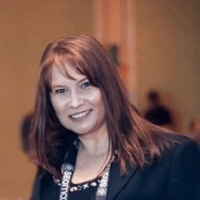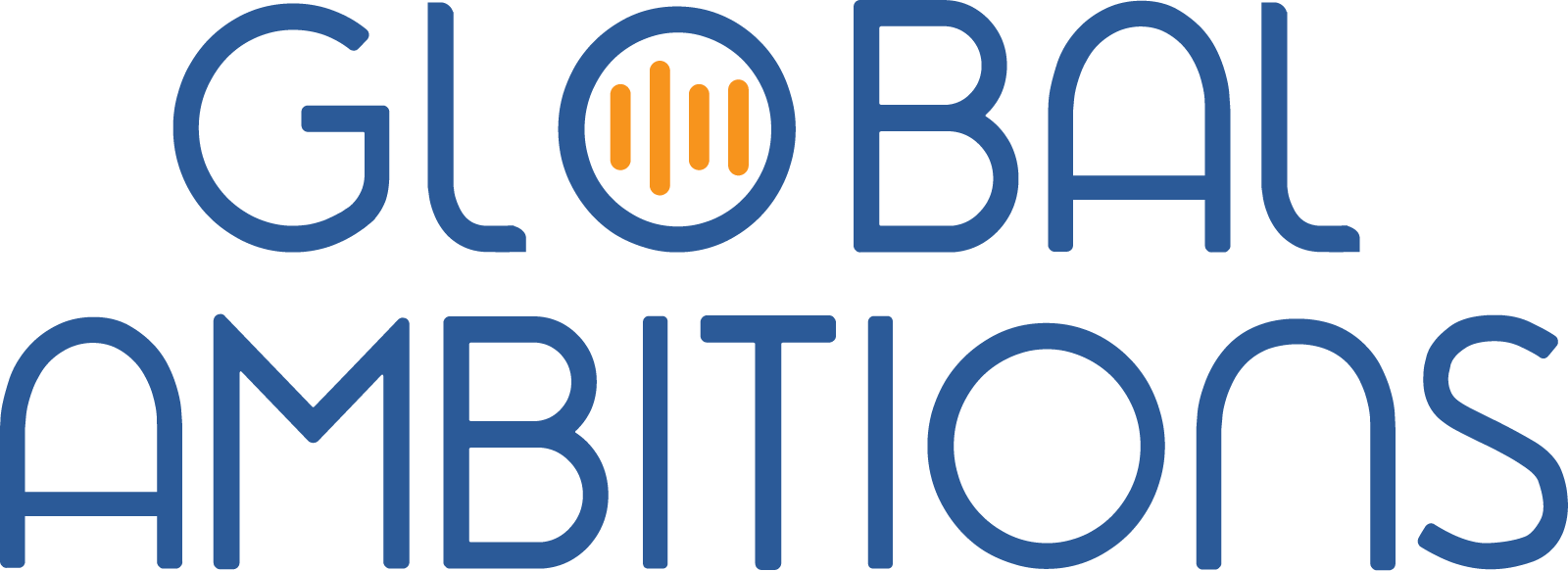With Lyena Solomon, Director of Globalization at ServiceNow
Below is a full transcript of this episode
Kim Shouler
Hello, everyone. My name’s Kim Shouler and I’m delighted to be your host today for the latest episode of Global Ambitions. And today, I’m very pleased that my guest is Lyena Solomon. She’s the Director of Globalization at ServiceNow. Hi Lyena. How are you?
Lyena Solomon
Hi, Kim. Doing well.
Kim Shouler
That’s great. Now, Lyena, as you may know, our last guest on the podcast was Karen Combe, who mentioned the Globalization Strategy Playbook that you were instrumental in putting together. So I’d like to go on to talk to you a bit about that. But first of all, it would be great if you could please tell us a little bit about you and about your role at ServiceNow.
Lyena Solomon
As you mentioned, I am Director of Globalization at ServiceNow. And for those who are not familiar with our company, we are an American cloud software company that optimizes workflows, removes complexity from everyday work for people. And our customers are primarily enterprises, large enterprises and clearly, we are selling our software across the world and we have many multilingual audiences and customers who work with us.
So I am responsible for user experiences of those audiences on our platform. And together with my team, I evaluate if the product is usable by multilingual audiences and how they experience the installation and the overall everyday experiences on the product. And it depends not only on different markets but also on different industries. And I work across multiple business groups in the company to align with the market requirements so we can produce something that is operational and localizable in every market.
I also analyze a lot of data and define the measuring frameworks around all the products that we have to measure the effect of globalization on the company’s success, as well as customer success. So I’m one of the customer-facing people. I do have experience in strategy and in analytics, so I have analyzed a lot of data and together with my team, we come up with a roadmap of how it’s going to look like for customers.
Kim Shouler
So you are using your background and a real focus on data and analytics to build the globalization strategy.
Lyena Solomon
That’s correct, and we are very customer-focused. So my job is to make sure that we’re delivering to customers what they want and what they will want. Once the product releases are available to them in their native languages and with the roadmap and the focus on the strategy that you just mentioned in mind.
Kim Shouler
I’d love to take us on now to the globalization strategy playbook. It’s mentioned in the playbook that your main goal personally in putting it together was that you really wanted to help globalization leaders to develop a strategic mindset. And there was one part in there in particular, that I really loved and I wanted to discuss with you, first of all, which I believe is a direct quote from you.
And that was “think big, start small, measure, change, succeed. That is the ticket to global domination.”
Now I thought this is great, and I wondered if you could just expand on this a little. And in particular, I think many of our listeners would be really interested to hear more about the major aspects of this.
Lyena Solomon
It feels to me that many people in the localization industry, almost all of them who I’ve met are very passionate about it. And the reason they’re passionate about localization is because they understand how hard it is to operate when you do not understand something. They try to help people to communicate. So in that sense, I believe that we are in the communication business.
We try to deliver the message that is crafted in English to people who have different historic understanding, different cultures, different references. So it resonates the same way. So from that perspective, localization is not translation.
Kim Shouler
Mm-Hmm.
Lyena Solomon
But many of the companies have localization groups or departments that do just that, just translation. And it feels to me that often the localization experts in the companies feel a disconnect between what they do and what they could be doing to improve the experience of their multilingual audiences. And that’s what the book is trying to give them. A framework of thinking about how to change that.
Because it’s less tactical. Because translation is tactical. You get your source, most likely in English, you convert it in another language, and that the output is the translation of that or transcription or whatever format it is. But it’s not that, it’s the communication. Have you communicated that message? And that’s what the measure is. You try to understand how successful am I in telling that message. Did they get it? And the way you measure it is like if you have planned for them to take an action, did they take that action after receiving your message?
Kim Shouler
Mm hmm.
Lyena Solomon
So figuring out what that measure is is going to be completely different for each company. But in order to have that measure, you have to look at the company strategy. Why am I talking to the German audience? What is the purpose of me translating into Japanese? Why is the French user not buying my product? All of those questions come to mind. And the answer is different, and we will answer it completely differently.
But measuring is extremely important, then changing the people’s minds within your company to look at you as a more strategic thinker versus a more operational one takes time. So you cannot come with a huge plan and expect everybody to support you. That’s why you start small and then you have to iterate. You have to make sure that you work with everybody in the company who can support you, those people who are passionate about the customers. And they include multilingual customers and you partner up together and try to make a change together. Thinking big and delivering the results for our customers.
Kim Shouler
So this measuring and the resulting data helps you to prove the value of localization and to help avoid it being seen purely as a cost center, but instead contributing to the end-user experience and thereby the company strategy and success. So my next question for you is what would be your main tip or piece of advice for localization experts who are currently trying to build the data, build relationships internally, and to build this influence for that team?
Lyena Solomon
As a globalization leader, one of the things you will be asked to do is come up with suggestions. And we all have them and we can come to our company leadership and say, you know, this is how it should be. This is what we should deliver to the multilingual users. And the next question they will ask you is how do you know? That’s where data comes in. Because you have to say, this is my research, this is what we have. And that comes with business data and user data, how people are using your product. And often it’s difficult to get.
I think the biggest difficulty for people is actually creating a business case and not a user case. Usually what people bring to the table is, this is how many users we have. This is how many multilingual users we have. This is how often they log on to our website. This is what they ask for.
And the question is, so what? Yeah. Like, yeah, OK, you got three million, fifty million, three hundred trillion. So that’s the leap that the globalization thinkers need to do is make connection to the business.
Kim Shouler
Yeah.
Lyena Solomon
And say, because we are in France trying to reach the homemakers or single moms, this is the content that they are reading on our side. This is how our business is going to help them in whatever they’re doing. And this is the revenue stream that we will expect from this motion. And that is the part that the book is helping people to do. It is creating that leap to the business, which is the strategy.
Kim Shouler
That’s a really good point. So if we need the data to show how localization affects the business goals, how would you suggest that that information is presented to the wider organization?
Lyena Solomon
People are very excited about big data and we have plenty of data, all kinds of data, and you can drown in it. So when you analyze it, I think the main part of the data thinking is the actual analysis and insights. What does the data tell you and why do you think it’s telling you those things? How do you know that it’s the right data that you’re using? What are the limitations? So knowing the data is very important and then applying it.
So once you applied it and figured out the trends, so then you need to have a story to present and people at a different level, different stakeholders have different interests in your data. They don’t have your brain. All they have is understanding what their role is and how your presentation is going to affect what they do. So when you present your data, you need to look at the audience you’re talking to.
If you’re presenting to strategic leaders, there needs to be a completely different framework and mindset of how you present. It has to tell your end-to-end story, and there is a very good example of a dashboard that is strategic in the playbook, as well as multiple examples. But then if you’re talking to your team, the dashboard is a little bit more tactical because you need to accomplish specific things. And that again, there’s an example of a tactical dashboard there where the people who are involved in, say, the translation process, etc. can look at it and say, this is how we’re doing with the specific program. So the purpose of them is different and what you put on the dashboard is different.
But the point is the same. A dashboard means, as a leader, I need to look at it and understand where I am. Am I doing well? Am I not doing well? Where can I change to do better? And the data that you’re presenting on there has to be clear, but predominantly it has to be useful data, right?
Not just data for data sake. It has to be there for a reason, and you need to look at that and decide what’s going to be there and why is it there? Is that correct? And that’s exactly what you should put there, because the people will say, So what? Why am I looking at this? What does it mean? So, therefore, any dashboard should have the insights. What does it mean? You have to tell people that.
You know, master usability person, Daniel Craig, said: “Don’t make me think”. That’s a perfect slogan. Do not make them think. Give them everything there. This is the data. This is what it means. This is why you should care. And this is how it’s going to affect the business goals that you have as a strategic leader in the company.
Kim Shouler
And it was really interesting what you mentioned there about the limitations of the data. So being aware of the limitations, can you speak a little bit more about that? What is a data limitation when it comes to data?
Lyena Solomon
So we all know about data regulations around the world. In Europe, there’s GDPR. You cannot see all the data that is available and there’s a good reason for all of this. But when you look at data, it still tells the story. You don’t need every single point of data. You also can’t get paralyzed by the amount of data that you can actually get. So what is important to know for globalization leaders is what data do you need? And looking at the data that you have, understand what it tells you.
So imagine a blog website where they came to the site, went to the page and they read the article, so they spent perhaps four minutes on it reading it. But that time is not recorded because they left. The way it measures your first login onto the website and the last one. The last one is that last page that you spent all this time on. So it’s not completely reflecting the time on site, it reflects only a portion of it. So you need to really recognize the data that you have.
Kim Shouler
Great advice there. Well, Lyena, I really could talk to you about this all day, but we will have to end it there. The playbook has very kindly been made available for free, so thank you for that. So we will make sure that we share the link so that our listeners can take a look if they haven’t already seen it. And thank you so much for speaking with me today. It’s been a real pleasure.
Lyena Solomon
Thank you very much for inviting me. It was my pleasure.

Lyena Solomon
Director of Globalization at ServiceNow
Check out The Globalization Strategy Playbook here.
If you have any feedback on the playbook please email it to StrategyPlaybook@gmail.com




